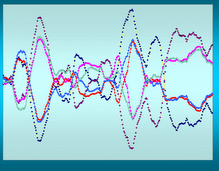Before we get to the results let me go over a couple of guidelines – this is based on daily close data not intra-day. That will make a difference.
I tested a lot of versions but only two showed any promise and I called them ATR y and ATR z. In the “y” version I used the approach - ATR(n) < ATR(n) 3 days ago. In the “z” version I used the approach - ATR(n) < ATR(n) 5 days ago.

Some were pretty good and some were pretty bad but as you can see for this approach ATR(10) seems to perform better. The 30-day net change was about the same for each of them so this is not necessarily a good filter for a long-term approach.
I noticed that 15 z seemed out of line so I decided to step down one period at a time from 14 to 10.

Even stranger 13 z was better than 14 z by a lot but then 12 z fell off again. So I said that the results might be date specific so I changed the start date so that February 27th would be included.

And the results fell in the same manner as before – ATR 10 is the best with ATR 13 following. I can’t explain this so we’ll just accept it as some mystery of the ATR (for the time being). Point is – ATR of a length 10 seems to be best as a short-term daily indicator.
I was surfing around looking at various sites and I happened across one site where the poster had an article suggesting using MACD with the ATR. That, to me is the best way to use the ATR – in concert with other indicators – I prefer the RSI, that guy likes the MACD. The fact is they both measure the same thing just one is more complex and a little slower than the other. Slow is good from the standpoint of a long-term relationship because slow ensures that you get on board a developed trend – but that is a matter of choice.
